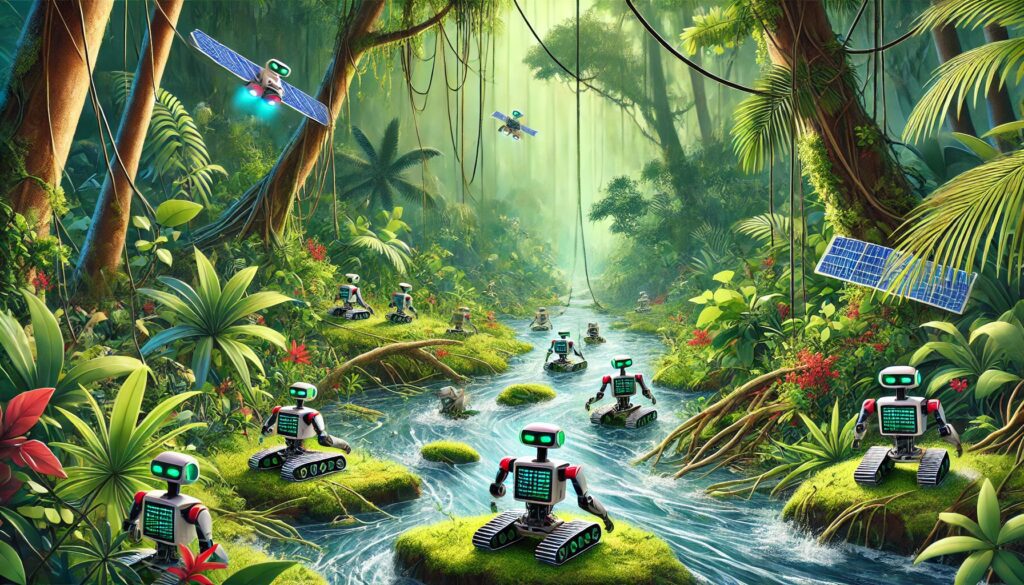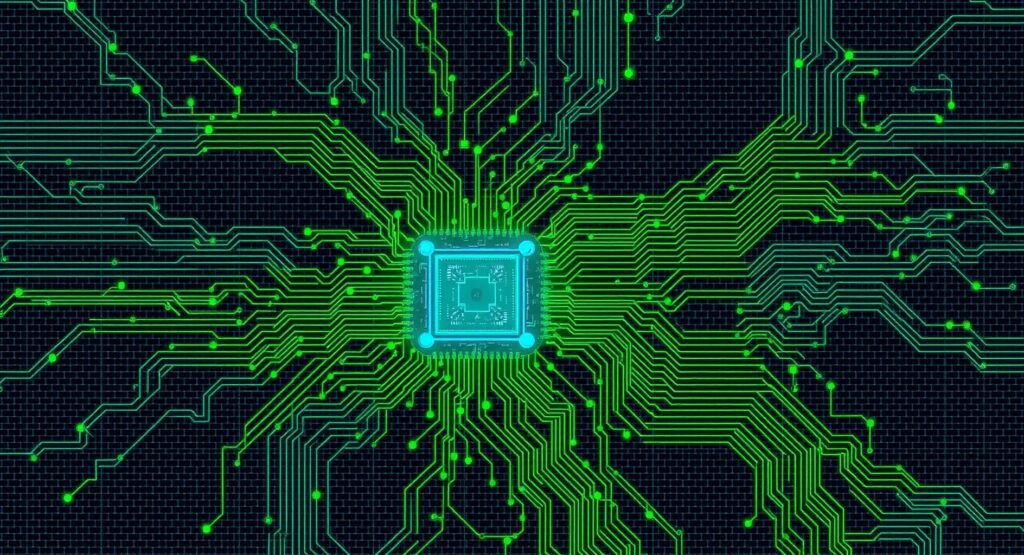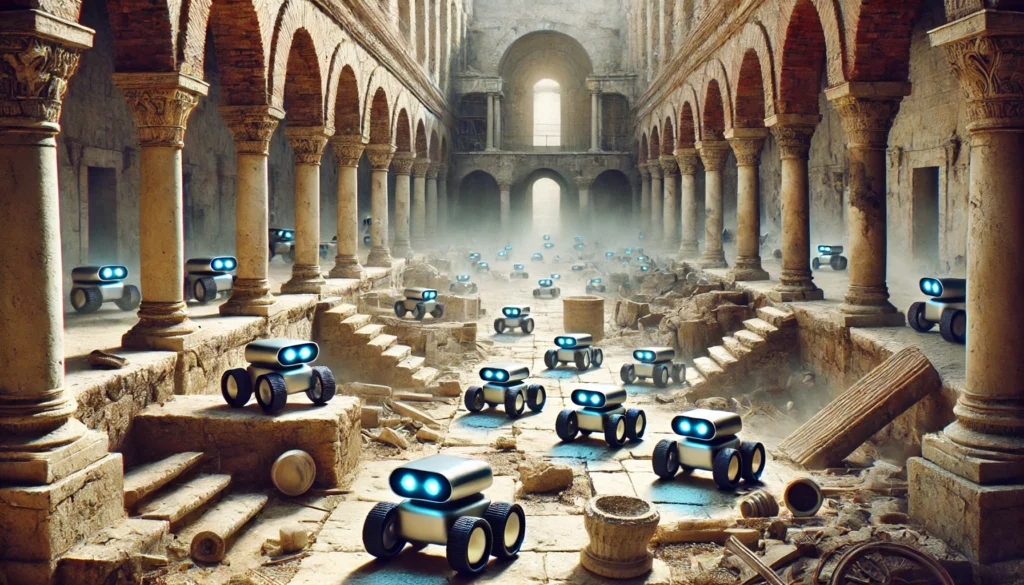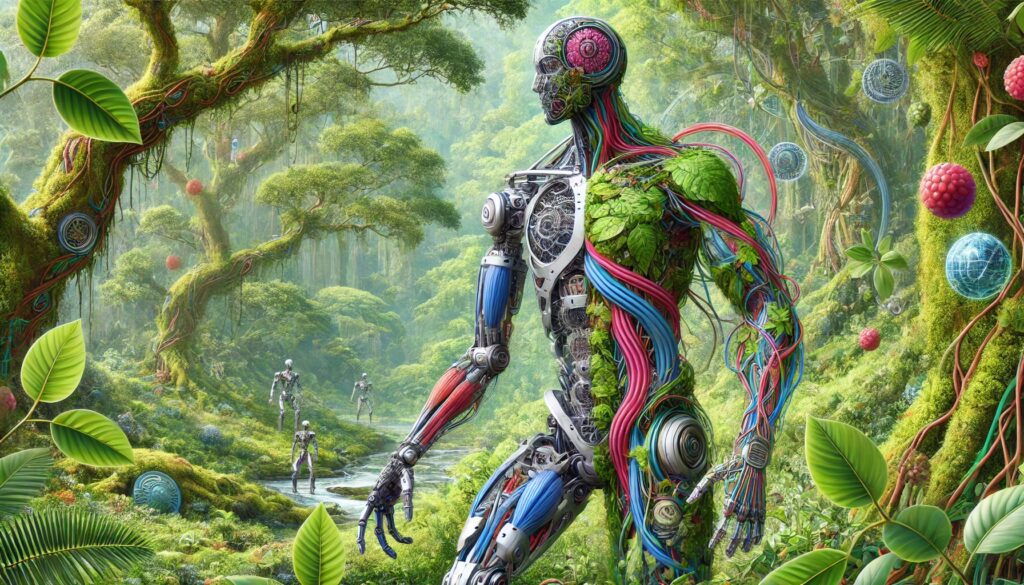
Biohybrid Robotics: Revolutionizing the Future of Robotics
What is Biohybrid Robotics?
Biohybrid robotics refers to the integration of biological components, such as muscle cells and neurons, with synthetic materials to create robotic systems.
These robots combine the robustness of machines with the adaptability of biological organisms, resulting in systems capable of complex tasks in dynamic environments. This interdisciplinary field merges robotics, biology, and materials science.
Key Components and Technologies
Biological Tissues
- Muscle Cells: Actuate movement by contracting and generating force.
- Neurons: Provide processing and control capabilities through signal transmission.
- Stem Cells: Differentiate into various cell types, adding versatility to biohybrid robots.
Synthetic Materials
- Polymers: Construct flexible and durable robotic frameworks.
- Hydrogels: Mimic the extracellular matrix of tissues due to their biocompatibility.
- Nanomaterials: Enhance strength, flexibility, and conductivity of synthetic materials.
Biointerfaces
- Electrodes: Facilitate communication between biological tissues and electronic components.
- Sensors: Monitor biological activities like muscle contractions and neural signals.
- Actuators: Convert energy into motion, mimicking the function of biological muscles.
Current Advancements
Researchers at MIT have designed flexible skeletons for muscle-powered robots. These structures maximize a muscle’s contraction force, allowing for more efficient movement in robotic systems. By aligning muscle cells in a specific direction, they achieved a predictable and reliable motion, paving the way for more advanced biohybrid robots (MIT News).
Muscle tissue harvested from mice has been used to move biohybrid robots, demonstrating the potential for biological tissues to power robotic movements. This advancement showcases how muscle cells can replace traditional motors, gears, and cables in robotics (TechCrunch).
At ETH Zurich, scientists are formulating 3D-printable living materials using muscle and nerve cells. These biohybrid actuators aim to mimic the smooth, energy-efficient motion of animals. The goal is to create robotic systems that can operate efficiently outside of a host body (ETH Zurich).
Muscle Tissue Propels Robotic Legs to Walk
In a groundbreaking development, Japanese researchers have successfully grown skeletal muscle cells in a laboratory and attached them to artificial limbs, achieving targeted movements through electrical stimulation. The team, led by Shoji Takeuchi from the University of Tokyo, reported their findings in the journal “Matter” on January 26, 2024.
The researchers cultivated skeletal muscle cells in a petri dish, attaching the muscle strands to flexible silicone legs, each several centimeters long. By applying precise electrical impulses, the scientists were able to stimulate the tissue, causing the artificial legs to contract and take tiny steps forward.
This innovative experiment, conducted in a water tank, demonstrates the potential for integrating biological and technical components to create more compact and efficient “biohybrid” robots. The successful combination of lab-grown muscle tissue with robotic limbs marks a significant step forward in the development of biohybrid technology.
Applications of Biohybrid Robotics
Medical Devices
- Biohybrid prosthetics that integrate muscle cells for natural movement.
- Smart implants that interact with biological tissues for better integration.
- Wearable robots that enhance mobility using biohybrid components.
Environmental Monitoring
- Biohybrid sensors that detect environmental changes using biological mechanisms.
- Robotic pollinators that mimic the actions of insects to assist in pollination.
Soft Robotics
- Bioinspired crawlers that navigate confined spaces like worms or caterpillars.
- Biohybrid grippers that handle delicate objects with precision, similar to human hands.
Future Directions
The future of biohybrid robotics is promising, with ongoing research aiming to overcome current challenges. Efforts are focused on improving the biocompatibility and integration of synthetic materials with biological tissues, enhancing the stability and longevity of biohybrid components, and addressing ethical considerations in the development and use of these technologies.
Advanced Biomaterials will play a crucial role, offering better mimicry of biological tissues and self-healing properties. Artificial Intelligence will enable adaptive control and learning from biological feedback, optimizing the performance of biohybrid systems. Additionally, micro and nanorobotics will emerge, revolutionizing drug delivery and microsurgery with biohybrid robots operating at cellular levels.
Biohybrid Robotics: Revolutionizing Medicine, Environment, and Soft Robotics
Breakthroughs in Biohybrid Robotics: A Glimpse into the Future
Biohybrid robotics is transforming industries by integrating biological components with robotic systems. These innovations offer unprecedented capabilities in various fields, from medical devices to environmental monitoring and soft robotics.
Medical Devices: Enhancing Human Capabilities
Biohybrid prosthetics are leading the way in creating natural movement through the integration of muscle cells. These prosthetics offer improved functionality, allowing for movements that closely mimic natural human motion. Smart implants represent another leap forward, designed to interact seamlessly with biological tissues, providing better integration and enhanced functionality. Additionally, wearable robots, like exoskeletons incorporating biohybrid elements, are enhancing mobility and strength, particularly benefiting individuals with mobility impairments (The Debrief) (MaP).
Environmental Monitoring: Biohybrid Sensors and Robotic Pollinators
Biohybrid sensors utilize biological mechanisms to detect environmental changes with high precision. These sensors are crucial in monitoring air and water quality, offering a sustainable approach to environmental protection. Robotic pollinators are another innovative application, mimicking the actions of insects to assist in pollination. This technology addresses the decline in natural pollinators, ensuring the stability of ecosystems and food production (StartUs Insights) (StrategiNext).
Soft Robotics: Bioinspired Crawlers and Grippers
In the realm of soft robotics, biohybrid crawlers and grippers are making significant strides. Bioinspired crawlers mimic the movement of worms and caterpillars, making them ideal for navigation in confined spaces. These robots offer solutions for search and rescue operations and medical procedures requiring navigation through narrow passages. Biohybrid grippers, inspired by the dexterity of human hands, can handle delicate objects with precision, making them valuable in various industries, including manufacturing and healthcare (MaP) .
The Road Ahead: Challenges and Innovations
Despite the promising advancements, biohybrid robotics faces challenges, such as the variability in muscle tissue integration and the need for consistent and reliable movement. Researchers are addressing these issues by developing new actuator designs and refining control mechanisms to enhance the performance of biohybrid systems. The future holds exciting possibilities, including the development of surgical robots powered by biological muscles, capable of performing minimally invasive procedures with unparalleled precision (The Debrief) (StrategiNext).
In conclusion, biohybrid robotics is at the forefront of technological innovation, offering solutions that blend the strengths of biological and artificial components. As research and development continue, these robots will become more integrated into our daily lives, improving healthcare, environmental monitoring, and various industrial applications.
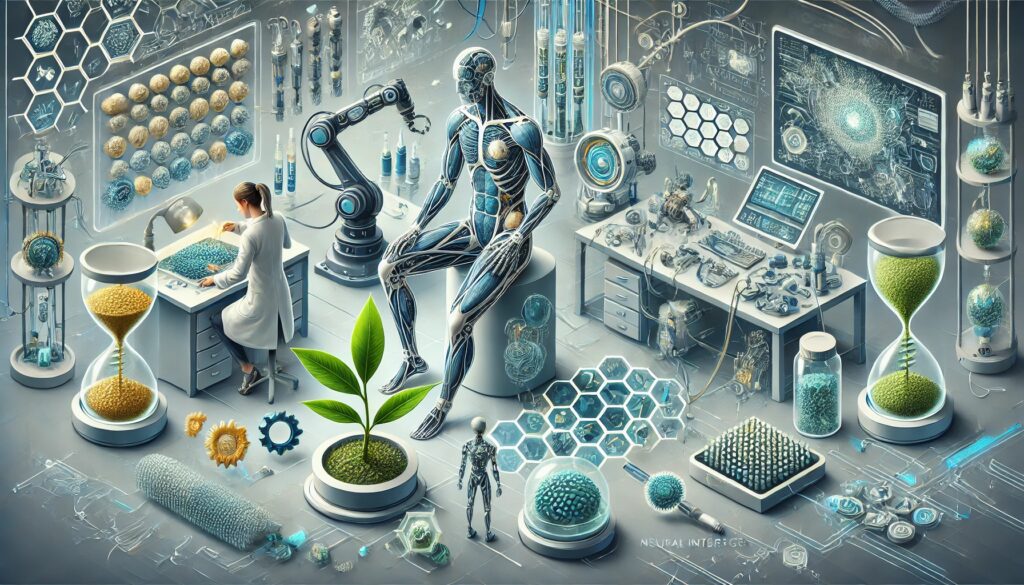
Biohybrid Robotics: Revolutionizing Medicine, Environment, and Soft Robotics
Breakthroughs in Biohybrid Robotics: A Glimpse into the Future
Biohybrid robotics is transforming industries by integrating biological components with robotic systems. These innovations offer unprecedented capabilities in various fields, from medical devices to environmental monitoring and soft robotics.
Medical Devices: Enhancing Human Capabilities
Biohybrid prosthetics are leading the way in creating natural movement through the integration of muscle cells. These prosthetics offer improved functionality, allowing for movements that closely mimic natural human motion. Smart implants represent another leap forward, designed to interact seamlessly with biological tissues, providing better integration and enhanced functionality. Additionally, wearable robots, like exoskeletons incorporating biohybrid elements, are enhancing mobility and strength, particularly benefiting individuals with mobility impairments.
Environmental Monitoring: Biohybrid Sensors and Robotic Pollinators
Biohybrid sensors utilize biological mechanisms to detect environmental changes with high precision. These sensors are crucial in monitoring air and water quality, offering a sustainable approach to environmental protection. Robotic pollinators are another innovative application, mimicking the actions of insects to assist in pollination. This technology addresses the decline in natural pollinators, ensuring the stability of ecosystems and food production.
Soft Robotics: Bioinspired Crawlers and Grippers
In the realm of soft robotics, biohybrid crawlers and grippers are making significant strides. Bioinspired crawlers mimic the movement of worms and caterpillars, making them ideal for navigation in confined spaces. These robots offer solutions for search and rescue operations and medical procedures requiring navigation through narrow passages. Biohybrid grippers, inspired by the dexterity of human hands, can handle delicate objects with precision, making them valuable in various industries, including manufacturing and healthcare.
Overcoming Challenges in Biohybrid Robotics
Biocompatibility: Ensuring Safe and Stable Interactions
One of the primary challenges in biohybrid robotics is ensuring biocompatibility. This involves making sure that synthetic materials do not trigger adverse biological responses when integrated with living tissues. Researchers are focusing on developing materials that are not only compatible with biological tissues but also stable in physiological conditions over the long term. For instance, materials must resist degradation and maintain functionality within the body’s complex environment. This requires extensive testing and innovation in material science to find the perfect balance.
Integration: Harmonizing Biological and Electronic Systems
Another significant hurdle is the integration of biological tissues with electronic systems. Achieving seamless communication between these two components is crucial for the functionality of biohybrid robots. This involves the development of sophisticated interfaces that can interpret and relay signals between biological tissues and electronic circuits accurately. Moreover, synchronization of biological and synthetic components is essential to perform coordinated tasks. This means both components must work in harmony, responding to each other in real-time to achieve desired outcomes. Advances in control theory and biomechatronics are vital in overcoming these integration challenges.
Ethical Considerations: Responsible Development and Use
The ethical implications of using biological tissues in robotics cannot be overlooked. There are concerns regarding the sourcing and use of biological materials, particularly when it involves animal or human tissues. Ensuring that these systems are developed and used responsibly is paramount. This includes adhering to ethical standards in research, obtaining proper consent for biological materials, and considering the long-term implications of biohybrid technologies. Ethical considerations also extend to the potential impact on society, including issues of privacy, security, and the possible displacement of human labor.

Future Directions in Biohybrid Robotics
Advanced Biomaterials: Enhancing Durability and Functionality
The future of biohybrid robotics will see the development of new advanced biomaterials that better mimic the properties of biological tissues. These materials will offer self-healing capabilities, enhancing the longevity and durability of biohybrid robots. Researchers are focusing on creating materials that can seamlessly integrate with biological tissues, providing robust and reliable performance in various applications.
Artificial Intelligence: Optimizing Performance
The integration of artificial intelligence (AI) in biohybrid robotics is a game-changer. AI will enable adaptive control, allowing biohybrid systems to learn from biological feedback and optimize their performance. Machine learning algorithms will be used to continuously improve the functionality of these systems, making them more efficient and effective in their tasks.
Regenerative Medicine: Revolutionizing Healthcare
Biohybrid robotics holds significant potential in regenerative medicine. These systems can be used in tissue engineering and regenerative therapies, creating more sophisticated biohybrid constructs that can replace or repair damaged tissues. This will revolutionize healthcare by providing advanced solutions for complex medical conditions.
Micro and Nanorobotics: Expanding Applications
The development of biohybrid robots at the micro and nanoscale will open up new possibilities in fields like drug delivery and microsurgery. These tiny robots can target and treat diseases at the cellular level, providing precise and effective treatments. The potential applications of micro and nanorobotics in biohybrid systems are vast, offering innovative solutions to some of the most challenging problems in medicine.
In conclusion, while biohybrid robotics holds immense potential, addressing these challenges is crucial for its successful implementation. Researchers and developers must work together to ensure biocompatibility, seamless integration, and ethical responsibility in the development of these advanced systems. The future directions in this field promise exciting advancements that will transform various industries and improve our quality of life.
FAQs
How do biohybrid robots differ from traditional robots?
Traditional robots are entirely made of synthetic materials (metal, plastic, etc.) and run by electronic control systems. Biohybrid robots, on the other hand, integrate biological materials like muscles, nerves, or tissues, allowing them to exhibit more natural behaviors such as growth, healing, and adaptability.
What are some real-world applications of biohybrid robotics?
Biohybrid robots are still in the research phase but have potential applications in medicine, like soft robotic prosthetics that move naturally, tissue engineering, or drug delivery systems. Another area is environmental monitoring, where these robots could mimic natural organisms to explore ecosystems.
How are biological materials integrated into robots?
Scientists cultivate or grow living tissues, such as muscle fibers or neural cells, and then combine them with robotic frameworks. For instance, muscle cells can be engineered to contract and relax, providing movement to the robot, while nerves or sensors could provide responsive feedback.
What are the challenges faced in biohybrid robotics?
Some major challenges include ensuring the long-term viability of biological materials, energy sources for the living components, and integrating complex biological control systems with synthetic frameworks. Also, achieving the scalability of these robots for commercial use remains a challenge.
How are biohybrid robots powered?
They can be powered using bioelectricity, like the body’s natural processes, or external power sources like battery systems. The development of biocompatible energy sources that work in harmony with biological tissues is an active area of research.
What are the ethical concerns regarding biohybrid robotics?
As biohybrid robotics uses living cells or tissues, ethical concerns arise related to the sources of biological material and potential implications for animal welfare. There are also concerns about safety and regulation of these systems in healthcare or other sensitive areas.
What role does AI play in biohybrid robotics?
AI systems can help control and optimize biohybrid robots, making them more adaptable and intelligent. For example, machine learning algorithms can be used to predict the behavior of biological tissues, improving the robot’s responses and efficiency.
Are biohybrid robots alive?
No, biohybrid robots are not considered “alive” in the traditional sense, but they contain living components. These biological parts work together with robotic elements but are typically not capable of independent life functions without their synthetic framework.
What is the future of biohybrid robotics?
The future of biohybrid robotics holds exciting possibilities. As technology advances, we may see the development of self-healing robots, biodegradable robots, or robots that can perform functions in medical treatment or space exploration. The field is poised to revolutionize how we think about both robotics and biology.
For more detailed insights, refer to these sources:
